Felix Christian Bauer
SynSense
EXODUS: Stable and Efficient Training of Spiking Neural Networks
May 20, 2022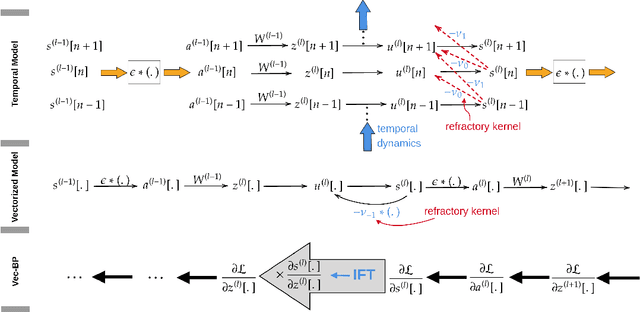

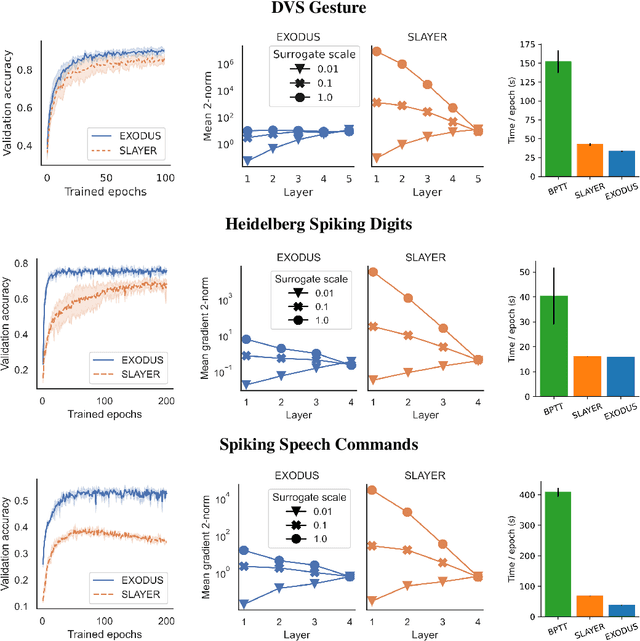

Abstract:Spiking Neural Networks (SNNs) are gaining significant traction in machine learning tasks where energy-efficiency is of utmost importance. Training such networks using the state-of-the-art back-propagation through time (BPTT) is, however, very time-consuming. Previous work by Shrestha and Orchard [2018] employs an efficient GPU-accelerated back-propagation algorithm called SLAYER, which speeds up training considerably. SLAYER, however, does not take into account the neuron reset mechanism while computing the gradients, which we argue to be the source of numerical instability. To counteract this, SLAYER introduces a gradient scale hyperparameter across layers, which needs manual tuning. In this paper, (i) we modify SLAYER and design an algorithm called EXODUS, that accounts for the neuron reset mechanism and applies the Implicit Function Theorem (IFT) to calculate the correct gradients (equivalent to those computed by BPTT), (ii) we eliminate the need for ad-hoc scaling of gradients, thus, reducing the training complexity tremendously, (iii) we demonstrate, via computer simulations, that EXODUS is numerically stable and achieves a comparable or better performance than SLAYER especially in various tasks with SNNs that rely on temporal features. Our code is available at https://github.com/synsense/sinabs-exodus.
Real-time ultra-low power ECG anomaly detection using an event-driven neuromorphic processor
Nov 13, 2019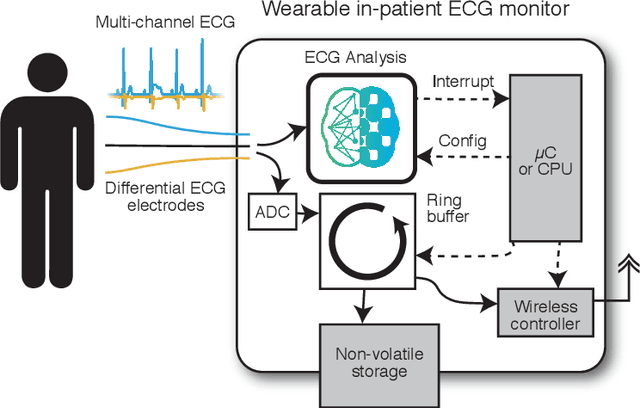
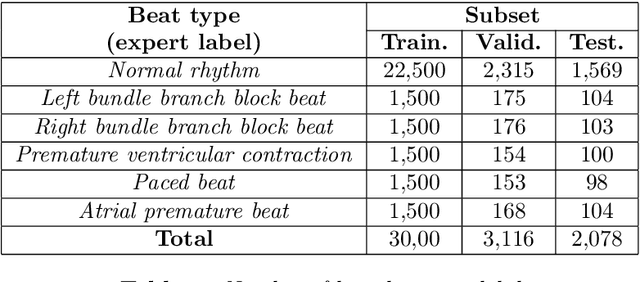

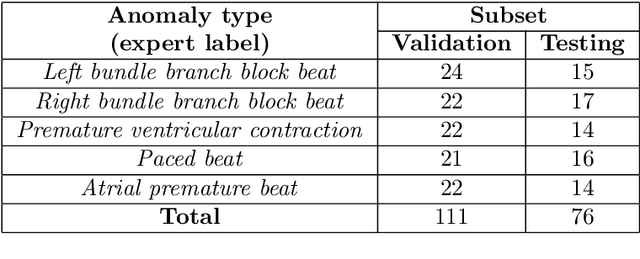
Abstract:Accurate detection of pathological conditions in human subjects can be achieved through off-line analysis of recorded biological signals such as electrocardiograms (ECGs). However, human diagnosis is time-consuming and expensive, as it requires the time of medical professionals. This is especially inefficient when indicative patterns in the biological signals are infrequent. Moreover, patients with suspected pathologies are often monitored for extended periods, requiring the storage and examination of large amounts of non-pathological data, and entailing a difficult visual search task for diagnosing professionals. In this work we propose a compact and sub-mW low power neural processing system that can be used to perform on-line and real-time preliminary diagnosis of pathological conditions, to raise warnings for the existence of possible pathological conditions, or to trigger an off-line data recording system for further analysis by a medical professional. We apply the system to real-time classification of ECG data for distinguishing between healthy heartbeats and pathological rhythms. Multi-channel analog ECG traces are encoded as asynchronous streams of binary events and processed using a spiking recurrent neural network operated in a reservoir computing paradigm. An event-driven neuron output layer is then trained to recognize one of several pathologies. Finally, the filtered activity of this output layer is used to generate a binary trigger signal indicating the presence or absence of a pathological pattern. We validate the approach proposed using a Dynamic Neuromorphic Asynchronous Processor (DYNAP) chip, implemented using a standard 180 nm CMOS VLSI process, and present experimental results measured from the chip.
 Add to Chrome
Add to Chrome Add to Firefox
Add to Firefox Add to Edge
Add to Edge